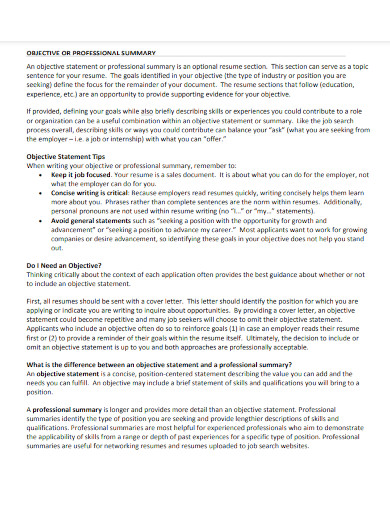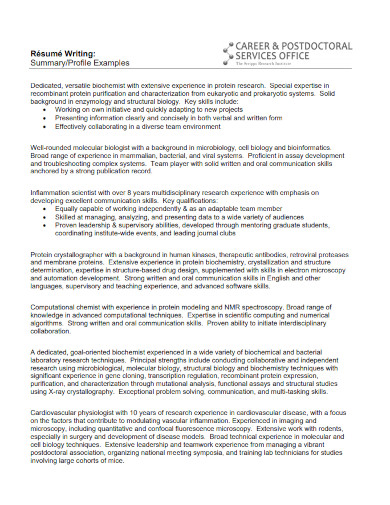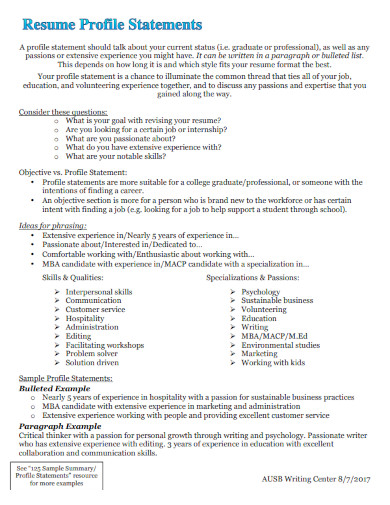10+ Resume Profile Examples to Download
A resume can have many specific parts tailored to the writer of the resume. For example, high school graduates or students should use a high school resume to apply for jobs that require no work experience. One of the most important parts that most resumes have is the resume profile, which highlights key skills and qualifications. Designing this section is easier and more professional with the help of ready-to-use profile templates, ensuring your resume stands out to potential employers.
1. Sample Resume Profiles
2. Sample Resume Profile Statements And Objectives
3. Resume Profile Example
4. Resume Profile Guide Objective
5. Example Resume Profile Summaries
6. Resume Summary Profile
7. Resume Writing Summary Profile Examples
8. Retrieve Academic Profile
9. Professional Resume Profile
10. Using Resume Profile Summary
11. Profile Statement Resume Resource
What Is a Resume Profile
A resume profile is a single paragraph that details and describes the person applying for the position. If you want examples, samples, and resume profile templates, you may view any of the links or articles on the list above.
How to Write a Resume Profile
A well-written resume profile can improve your chances by augmenting the impression set by your resume. To create a well-written resume profile, you must ensure that the content can succinctly summarize the content of your resume. Note, when writing a resume profile you must make sure that this profile will only span a single paragraph.
Step 1: Outline Your Resume Profile
You may create an outline for your resume profile to help provide a sound structure for your resume profile. This outline should detail the small details each sentence will have in your resume profile.
Step 2: List Your Resume Headline
The top of the resume profile can have a resume headline that will detail a single succinct statement about yourself. Note that this is wholly optional and is not needed when writing a resume profile.
Step 3: Write a Brief Description About Yourself
Begin the resume profile with a brief description of yourself. This description should include basic information about yourself and a bit of your personality. The description should properly transition to your list of skills.
Step 4: List Out Your Skills and Work Experience
After your description, you will need to give a brief list of all the hard and soft skills you possess. If you have no work experience, you may instead indicate your highest level of education or educational attainment. If you have work experience and are planning to write your resume experience, then you may insert a brief description of your work experience in the field associated with the position you are applying for.
Step 5: Conclude Why You are Fit for the Company
The final part of the resume profile should indicate why you are interested in the company. Not only that, but you will also need to state why you are a perfect fit for the position you are applying for.
FAQs
What is the difference between a resume profile and a resume introduction?
The resume profile is a short profile about the writer of the resume, that will technically introduce the person to the hiring manager and explain why they are a good fit for the company. A resume introduction will directly introduce the writer of the resume to the hiring manager or HR, which is often located in the first part of the resume. Technically both of these two sections of the resume fulfill the same purpose of introducing and setting the tone of the impression of the resume writer. Because of this reasoning, both of these parts of the resume are mutually exclusive and shouldn’t be present in the same resume. The main difference between the two is the tone and the straightforwardness of the writer of the resume. Since these two are mutually exclusive, a resume profile is best used when the resume is accompanied by a cover letter.
What is a professional profile?
A professional profile is another of sating a resume profile. This means if the job or open position posting asks for or requires a professional profile, then the applicant must create a resume profile instead of a resume introduction. The professional profile must include a resume headline that will be located at the top of the professional profile. Not only that but it is preferred to accompany a general resume with a professional profile with a cover letter to create the perfect resume.
What should I avoid adding to the resume profile?
Like most resumes, the biggest thing you should avoid is putting any facts about yourself that aren’t real, or truthful. This also includes embellishments of awards and hard or soft skills that you do not possess. You will need to avoid doing this as some jobs and positions will require the person to have a specific soft or hard skill. If you cannot deliver what is promised on your resume, not only will it tank the position you are applying for, but it will also affect your reputation and any future working efforts you will undertake.
A resume profile is a specific section located at the beginning of a person’s resume. This profile will succinctly describe the resume writer’s profile with a brief description of one’s personality, work history, and skills. A well-written resume profile can succinctly describe the person and improve the impression of the hiring manager or HR, improving one’s chances of succeeding in the first parts of the hiring process.













